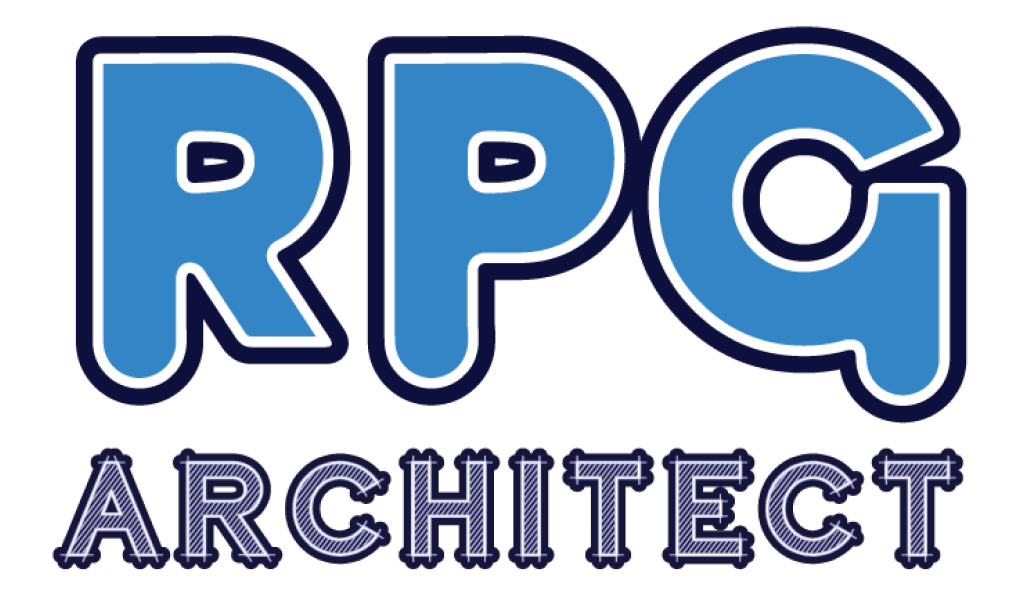February had a pretty big set of updates going on, mostly focused on usability around Action Sequences, but I also managed to get a number of bug fixes and small feature updates in (cue Bert taking a list of them and approving in video).
The big adds for February were the Action Sequence editor — which went from very barebones to visualize — to actually being somewhat intuitive and usable. The elements are still “interesting” in it, since some elements require others to wait, so the timing can be a bit confusing (as well as the placement/order of the elements matter in the same vertical slice). That said, you should be able to have a better idea of what’s going on and see it in real time.
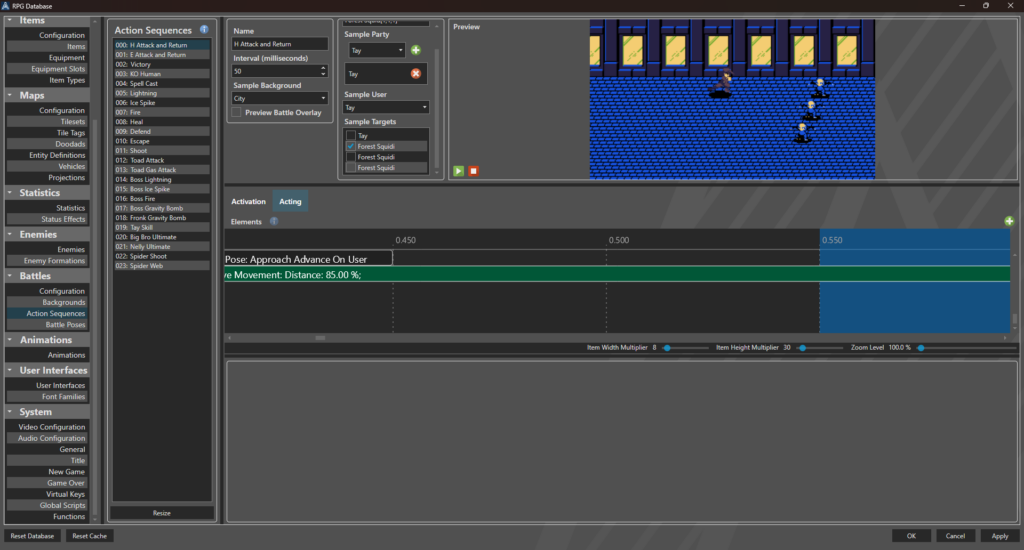
You’ll see that you can configure the preview details in the box immediately next to the preview area. You can configure what battle background / enemy formation you want to preview with, as well as the user and targets. You can also play the entire sequence thru and see (visually) how it plays out.
While I was working on Action Sequences, I noticed there were some issues with how resources were being cleaned up. The end result is that… there are no more memory leaks here. This should hopefully help with some of the issues our MacOS users were noticing. I ended up refactoring the preview engine for Battle Backgrounds / Enemy Formations / Action Sequences, such that they all utilize the exact same internal engine, and they all benefit from this change.
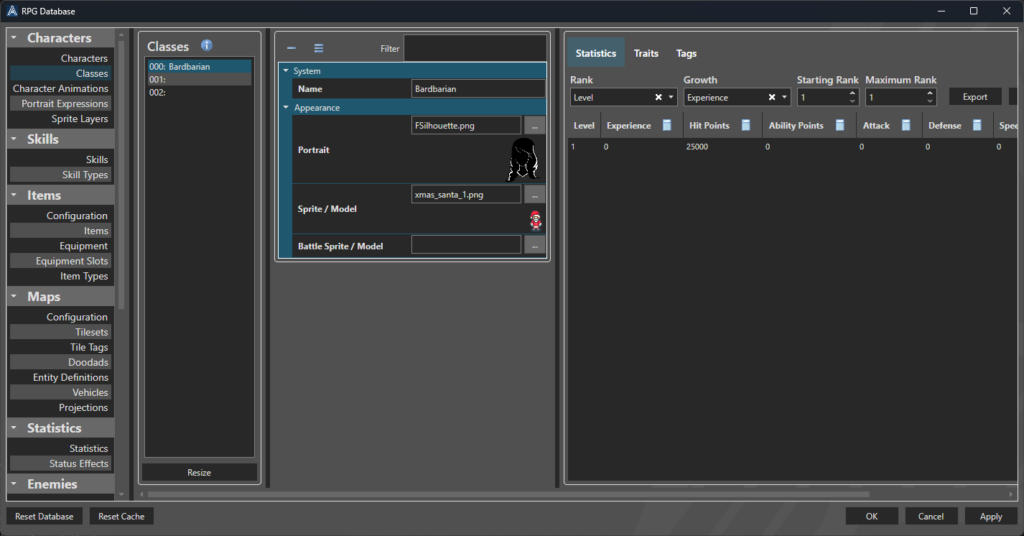
The other big add this month are… Classes! You can finally add classes to your characters. Classes (or Jobs) can be stacked — you are not limited to one, though you can choose to enforce one, if that is your desire. However, any dreams of creating a Fighter/Thief/Wizard are totally doable.
Class attributes/statistics are supplemental — that means that they add together. In the example of my Bardbarian (cough BERT cough), the 25,000 HP is added on to Hiroshi (the character)’s HP base of 400 HP, for a total of 25,400 HP when the class is applied. You can apply traits to do interesting things, like set the character’s HP be scaled by a percentage. So, rather than having raw stat bonuses (as shown above), you could simply scale the HP by 125% (which would take Hiroshi from 400 to 500), and so forth. You can mix and match these effects!
You cannot stack a class twice, so it isn’t possible to be a Fighter/Fighter/Thief, per the earlier example, though.
Classes can be applied via the Character section of the database or the via a command under Characters in scripting called “Change Class” (I know, it’s very original).
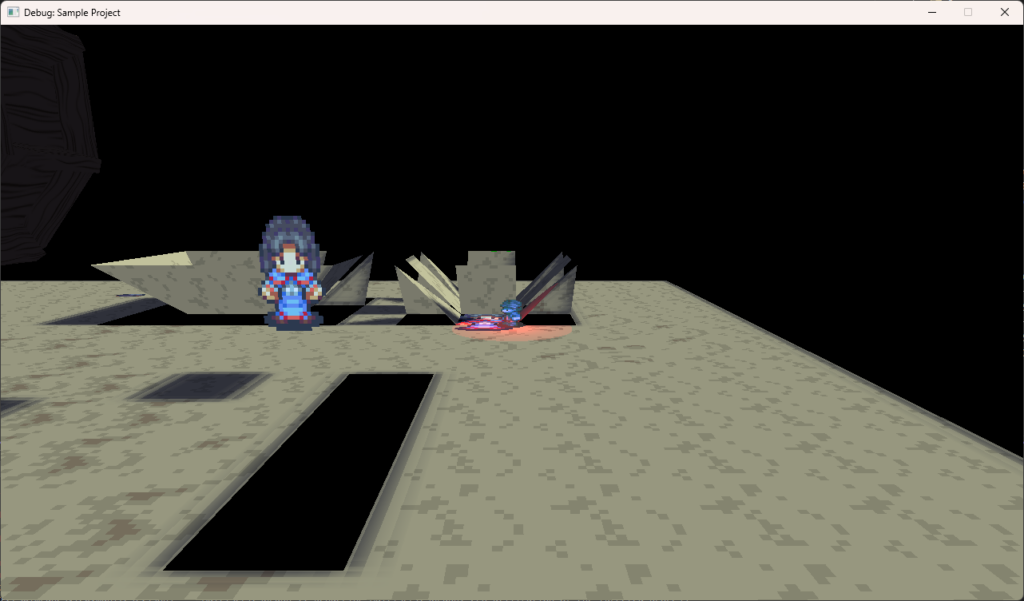
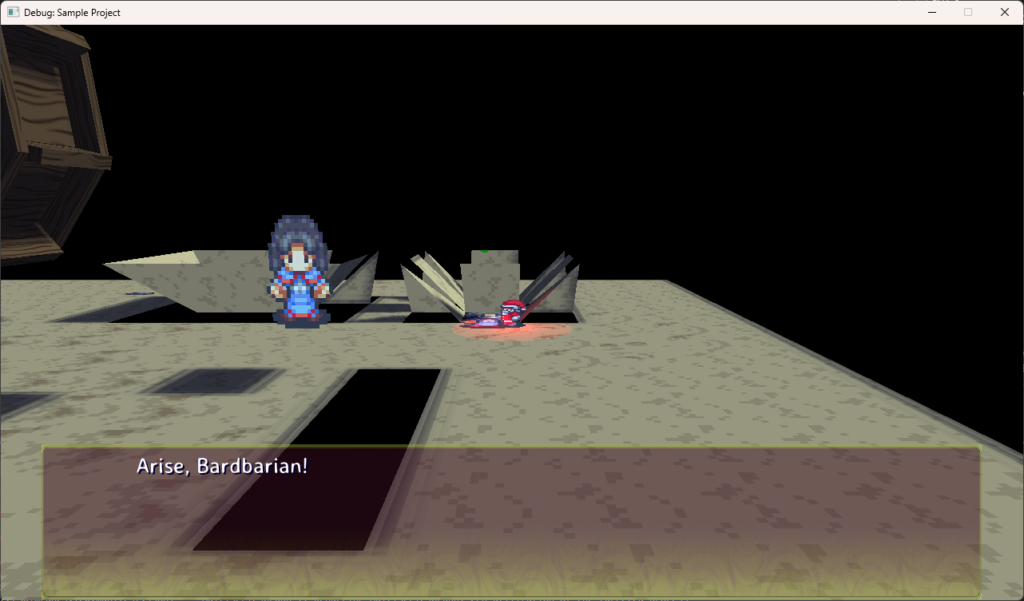
YouTube has had a few more livestreams — Jason (Noobk) and Matt (Mondune) have been showing off active development progress of sprite work/pixel art and sample/template projects. If you ever wonder what goes into making RPG Architect, this is a great start to see what these guys do to help out. I’d stream myself, but the code wouldn’t really be interesting — so you’d only get the whacky faces I make at my monitor.
My goal for March adjusted — originally y’all were going to get weather effects and a new user interface element, but I’m going to shoot for the entire month to finally getting the physics engine nailed down. I’ll be looking into switching to another library to handle our use case a bit better (Jitter Physics 2, instead of Bepu Physics 2). If there’s time, maybe I’ll pull in some of the other stuff too.
If y’all are really lucky there might be a preview of Android/iOS/web assembly exporting. Maybe. We’ll see how the physics conversion goes, as well as if the libraries I’m looking at actually do what they’re supposed to.
That’s it for February!
As always:
Thank you so much for your support so far. I’m looking forward to building this community further and giving you the engine you may not have known you always wanted!

